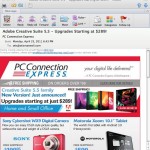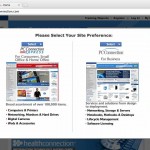(Actually I did know some of these because I had spent time as an advertising “suit”, which required me to apologize way too often for tardy or sloppy creative.)
1. Be on time. Advertising is a business. If you are late on a deadline, it impacts other people throughout your client’s marketing operation and may cost a lot of money. Don’t do it. Exception: sometimes being late is unavoidable. Maybe you have a personal emergency, or maybe the project turns out more complicated than you expected. Talk to the client as early as possible and see if you can get an extension. Make this the very rare exception rather than the rule.
2. Follow the brief or other instructions unless you have raised a question at the startup meeting and gotten very clear approval to go in a different direction. The creative brief, as I’ve mentioned elsewhere, is a contract between you and the account team. Violate it at your peril.
3. Cultivate a reputation for reliability. Do what you say you will do. Show up at meetings on time, be organized, don’t keep calling the client because you forgot to ask about something you need for your research.
TIP: if you achieve the above three things you will stand out in the client’s mind as a better choice than 95% of other creative practitioners, including people who are more talented than you but can’t escape the label of “flaky creatives”.
4. Understand how freelancers get paid. Be aware that some clients pay so fast it takes your breath away (these will become your favorites… why can’t others learn how big a difference it makes?) and others will intentionally pay you late as part of their cash management. Over time you will develop an instinct for which is which. If somebody is deliberately slow-pay your options are building in extra fees to compensate for the aggravation, finding another client, or simply living with it.
5. Remember you’re a copywriter, not a lawyer or accountant or collection agency. Don’t insist on elaborate contracts, penalties for late payment and similar practices of big companies because you can’t afford to hire real professionals to enforce these practices without raising your rates, plus your clients will just get irritated and go elsewhere. The best way to insure you won’t get screwed, or sued, is to deliver quality work that makes people value you as a business partner.
6. Bill as soon as you can, and certainly as soon as the project is done. Clients tend to pay faster when the project still has a warm glow in their hearts. Plus if a client is going to stiff you or slow-pay, the sooner you know about it the better. Note: In over 20 years of freelance I have encountered only a couple of real crooks. If you choose quality clients and deliver quality work, I predict your experience will be similar.
7. Be sensitive to potential competitive conflicts. Never work for two direct competitors at the same time because it’s a clear conflict of interest; you are trying to take business away from yourself. Never, ever go directly to an agency client’s customers asking for work, even if those customers approach you to do so. The agency will be enraged, may sue you, and at best your reputation for loyalty and integrity will suffer.
8. Never ever lie. Not about your experience, not about your research, and especially not about the originality of your work. Marketing is a surprisingly small world, and getting more so with the network effect of the internet. I once had a freelancer present to me a package I had written as part of his own portfolio. Needless to say, he did not get work from me.
We’re in the middle of a series of posts in which I cover the business aspects of copywriting as I teach them in my class for the Direct Marketing Association.


